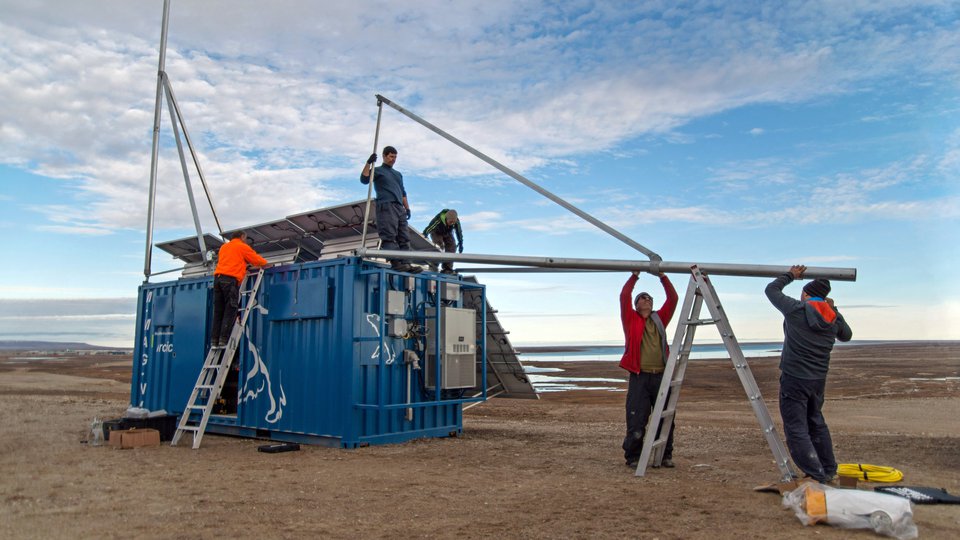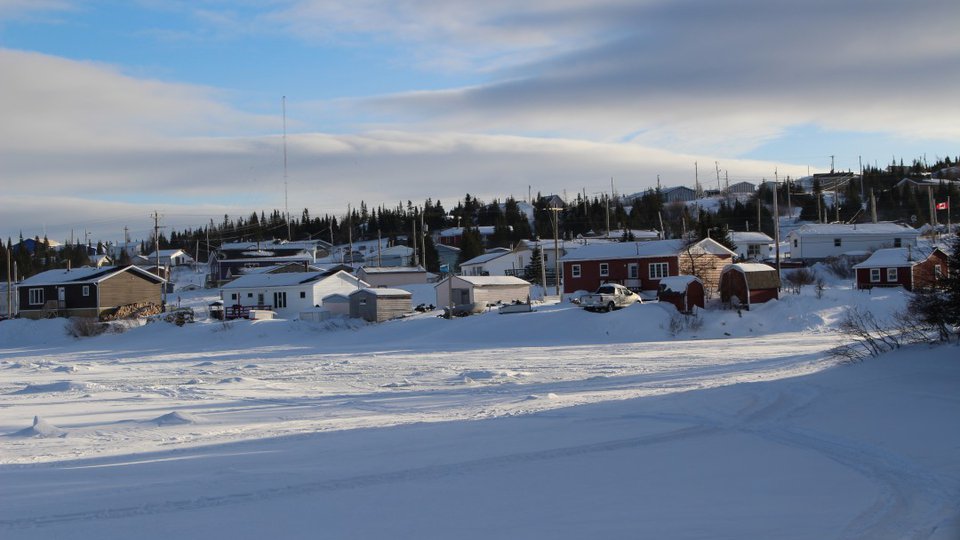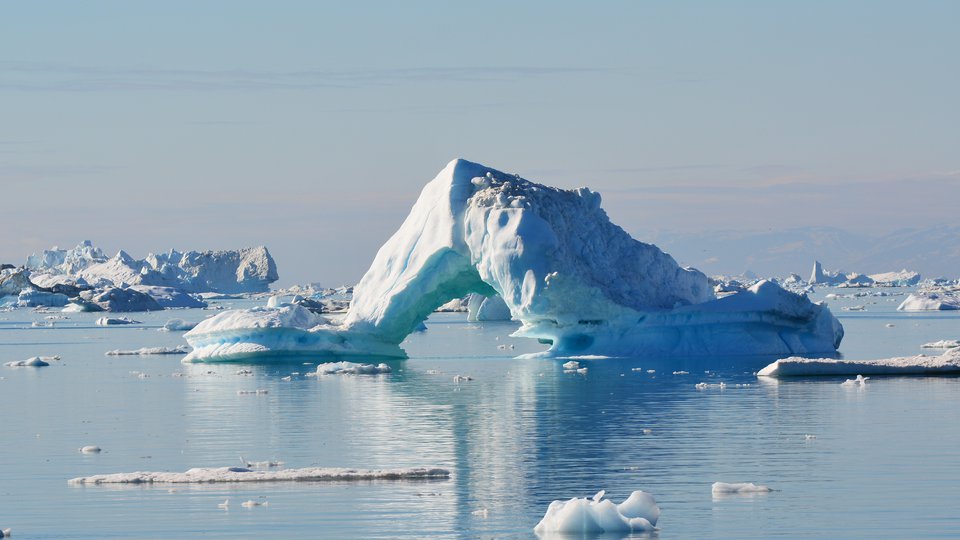
As our team sat moored in Coral Harbour, Nunavut aboard the research vessel William Kennedy we began to look back on the journey we had just completed. Everyone started to organize their samples and put them into coolers wrapped in “fragile” stickers for the long journey home. The weather was calm, and the fog that had taken over the harbor provided a serene atmosphere for our final days in the Arctic. My time was spent inputting station information into excel, cleaning and reflecting on my first trip to the Arctic.
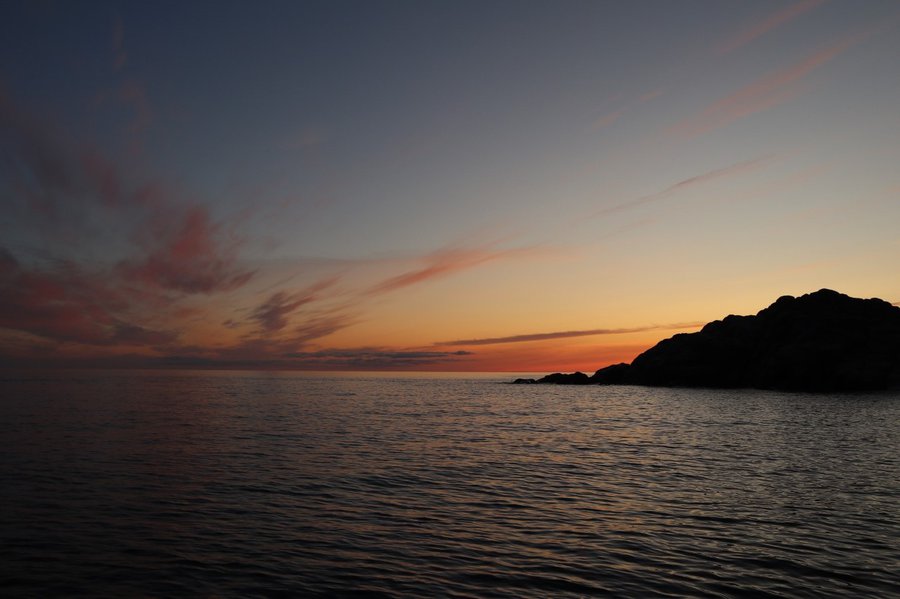
The sun setting over Hudson Bay. (Photo: Kelsey Koerner)
This trip to the Arctic was also my first time onboard a research vessel, and it had been quite an adventure. I was nervous, but mostly excited to board the William Kennedy. What would we find? The purpose of my journey was to collect mud samples (see Mud Hunting Around Southampton Island) in order to understand changes in oceanographic conditions around the island over time. Mud is important because it holds clues to past environmental conditions. It allows the preservation of fossils of microorganisms such as diatoms, dinoflagellate cysts, foraminifera and many others. BUT, collecting mud in Hudson’s Bay is no easy task. The rocky terrain poses a challenge for collecting large amounts of sediment. When you add high wind and swells into the mix it can sometimes be impossible. However, on the William Kennedy, everyone was willing to help.
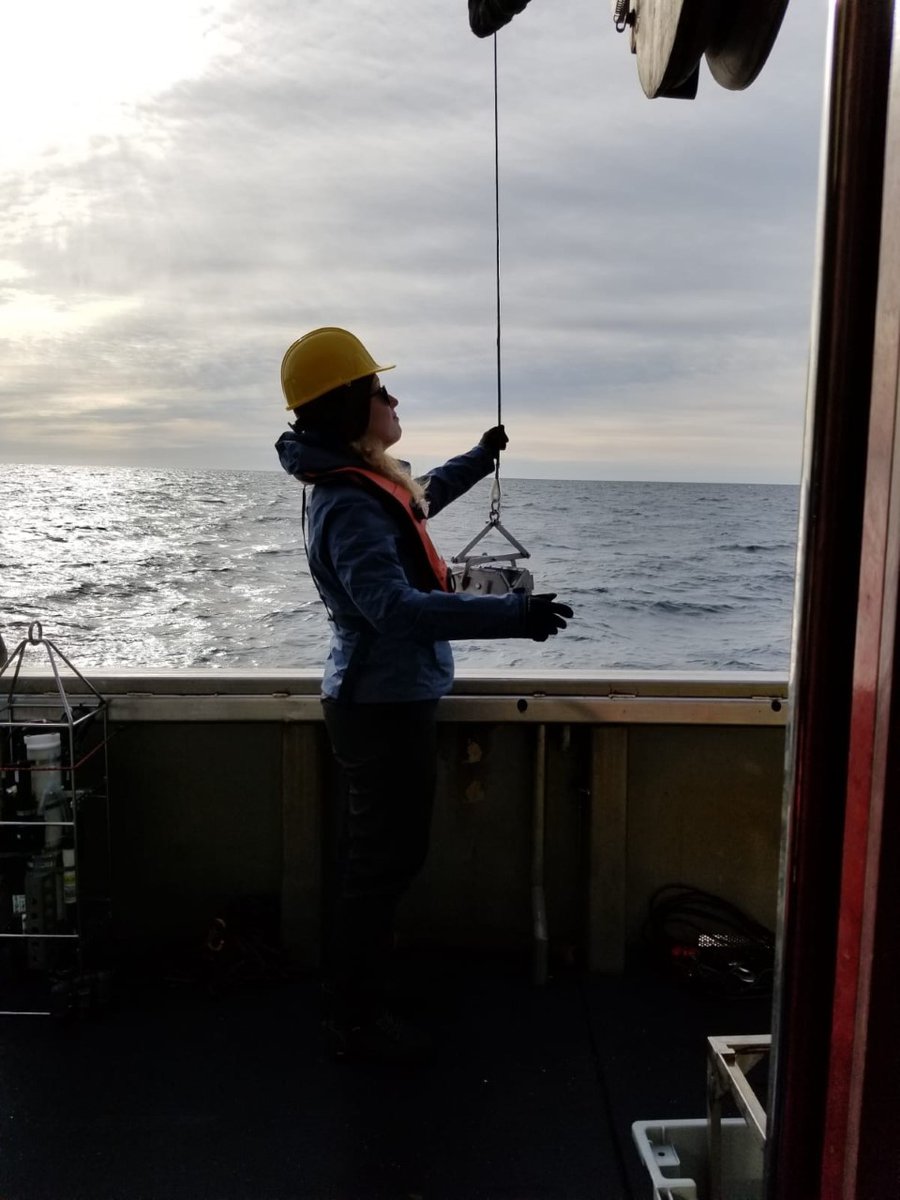
Kelsey Koerner deploying equipment from the R/V William Kennedy. (Photo: provided by Kelsey Koerner)
In working in close proximity to all of the researchers on board, it gave me a good opportunity to understand different research techniques, and sometimes to even participate in them. On research vessels, time is limited, and everyone is motivated to collect as many samples as possible. Teamwork is a must and helping everyone is extremely important to reach our data collection goals. In my time aboard the WK, I learned more than just how to collect and sub-sample sediment cores. I also learned to deploy instruments such as the CTD, phytoplankton, zooplankton and the bongo nets. Furthermore, I learned how to identify the organisms that were collected in these nets. My advice for anyone about to embark on any research endeavor? Throw yourself into every opportunity you can, nothing teaches you more than hands on experience.
"This year was successful in the collection of sediment at different stations around the entire island, which will give us a regional picture of the changes in oceanic regimes through time."
Kelsey Koerner
My education onboard the WK extended way further than just the scientific aspects of our cruise as well. The crew onboard the WK has plenty of experience navigating the Arctic, rough seas and high concentrations of sea ice, all of which we encountered on our trip. Any time I was in the bridge I would learn how to interpret weather patterns, how the boat is driven, and how the radar works on board. The dive team that was on board taught us about diving in the Arctic, and we learned all about the protection and observation of wildlife from our guide from Naujaat, Philipp.
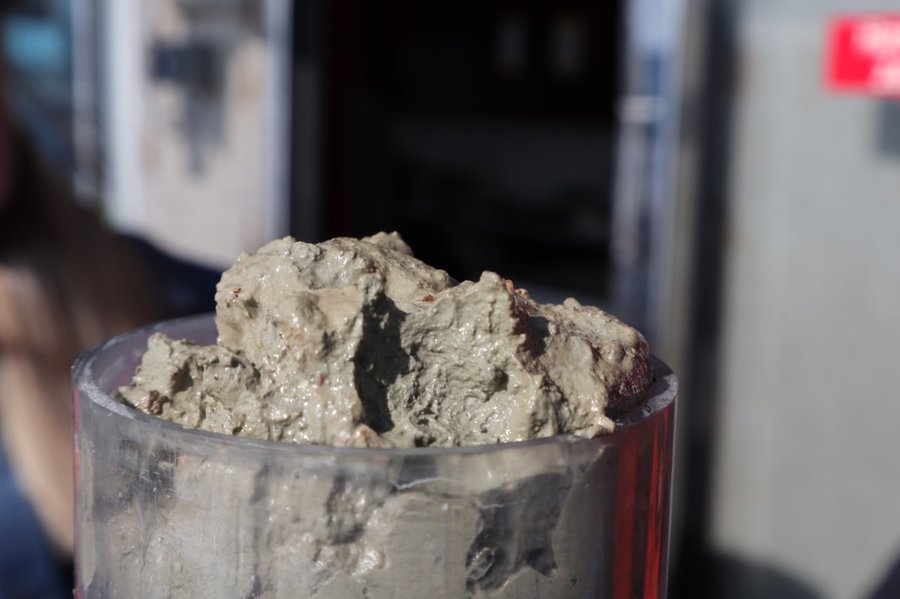
A sediment sample collected fromt he R/V William Kennedy. (Photo: Kelsey Koerner)
This summer marked the first full circumnavigation around Southampton Island for the William Kennedy. This year was successful in the collection of sediment at different stations around the entire island, which will give us a regional picture of the changes in oceanic regimes through time. From these sediment cores we will analyze both microfossil and geochemical proxies to document changes in oceanic parameters such as sea ice concentration, temperature and salinity through the last two millennia. The next step is to take all our samples of mud to the lab and begin to process them for these different types of analysis. We collected 21 surface samples and 5 long cores, which are full of information waiting to be discovered, and I cannot wait to get started.
